In May 2016 the President of the United States signed the National Bison Legacy Act, making the North American bison the official National Mammal of the United States. I think they made the wrong choice and should have gone with the white-tailed deer (Odocoileus virginianus) instead. Hear me out. The white-tailed deer is the most abundant and wide-ranging large mammal in North America, with a fossil record dating back 4 million years and a native range stretching from the east coast to the Rocky Mountains, and from southern Canada to Peru. In the United States they’re only absent from southern California and most of Utah and Nevada.
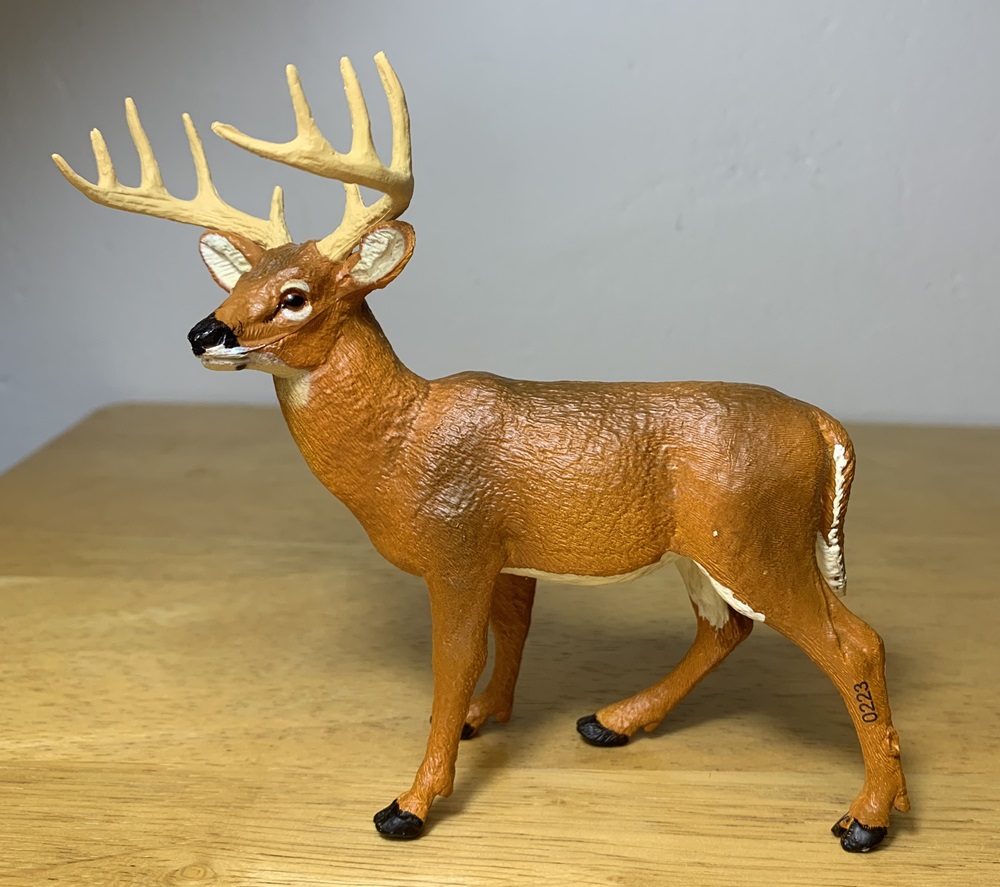
White-tailed deer are also a conservation success story, in the late 1800’s their population reached an all-time low of 500,000 but today they number an estimated 30 million and thrive in virtually every habitat, manmade or otherwise, and for better or worse. Each year, 2.1 million deer are involved in vehicle collisions, 5.9 million are harvested by hunters, and tens of thousands of dollars’ worth of crops are damaged by deer. Ever wonder why the American dollar is called a buck? It’s theorized that it’s because buckskin was once used as currency. So, while the bison might be the largest and most impressive North American mammal, no large mammal is as intertwined with the United States and its people than the white-tailed deer.

Today we’re looking at the Safari Ltd. white-tailed deer, sculpted by Doug Watson and released in 2012. For my own collection I went with a male, or buck, but Safari also makes a doe. The figure represents a buck during the breeding season, when his antlers have finished growing and shed their velvet covering. He is presented paused in mid-stride and looking leftward with his ears perked, as if alerted to danger or the presence of a rival.
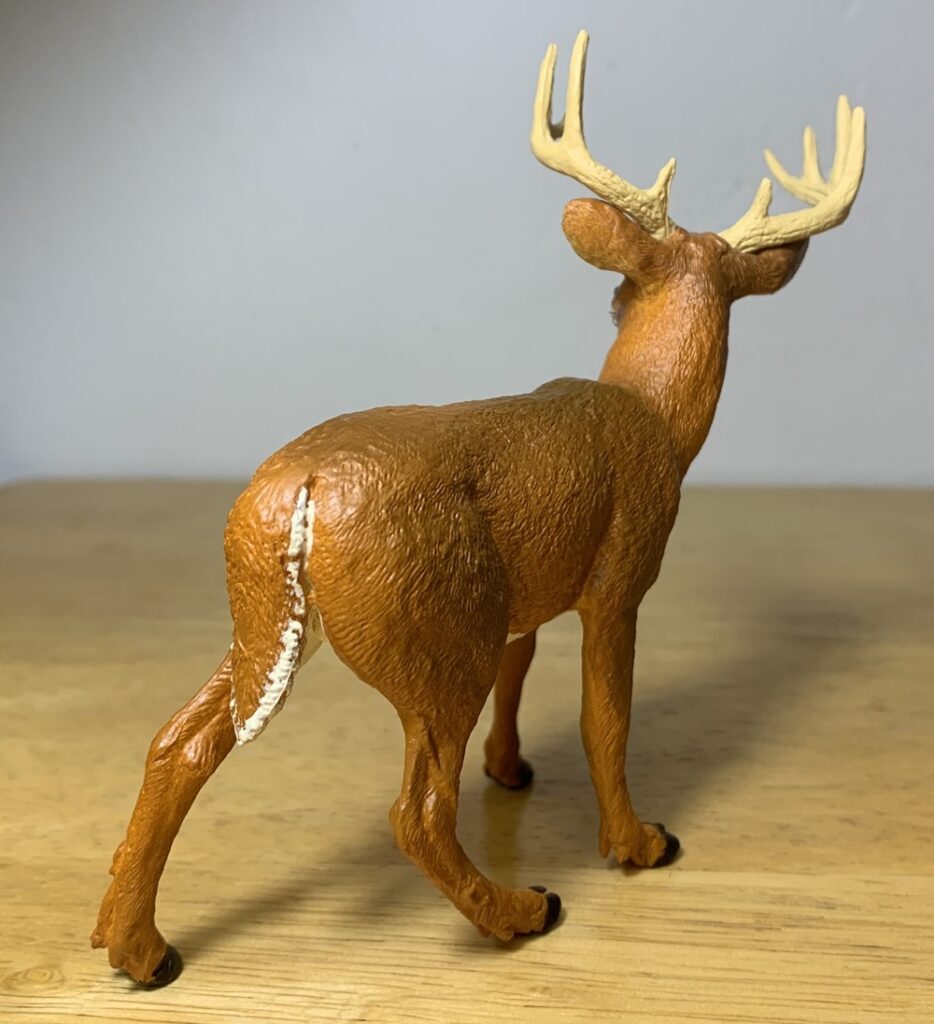
This deer stands 2.75” (6.9 cm) tall at the shoulder and measures 3.5” (8.89 cm) from snout-to-rump. The size of white-tail deer varies significantly between the 26 described sub-species, with those living in the north being larger than those in the south. Generally, white-tailed deer weigh between 150-300 lbs. (68 to 136 kg), measure 71” (180 cm) in length, and stand 39” (99 cm) at the shoulder. The smallest sub-species, the endangered Key deer, have an average weight of 44-75 lbs. (20-34 kg). Using length, the figure comes out to be 1/20 in scale.

Due to its age, the Safari white-tailed deer is a bit rough in places, with visible seams, sloppy paint application, and fewer refined details than more recent figures. That said, in convincingly conveying the anatomy and presence of a white-tailed deer, it is among the best.
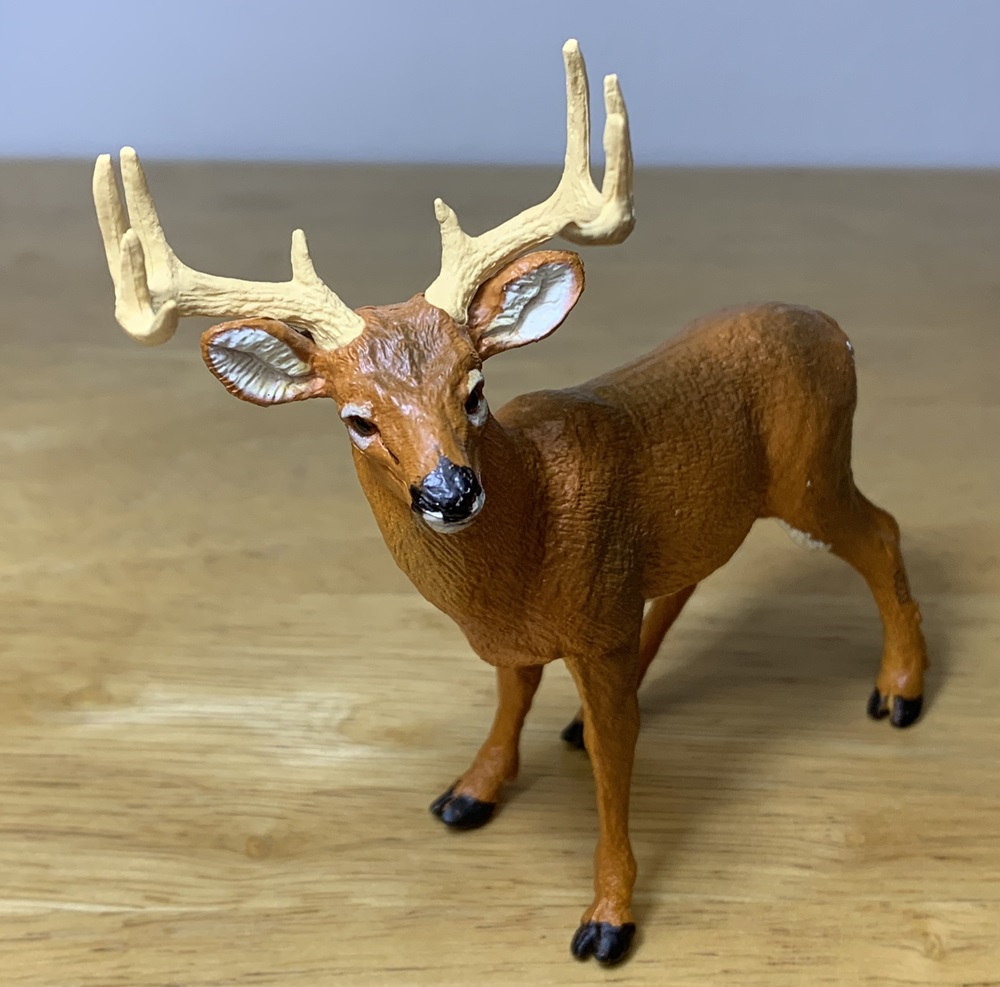
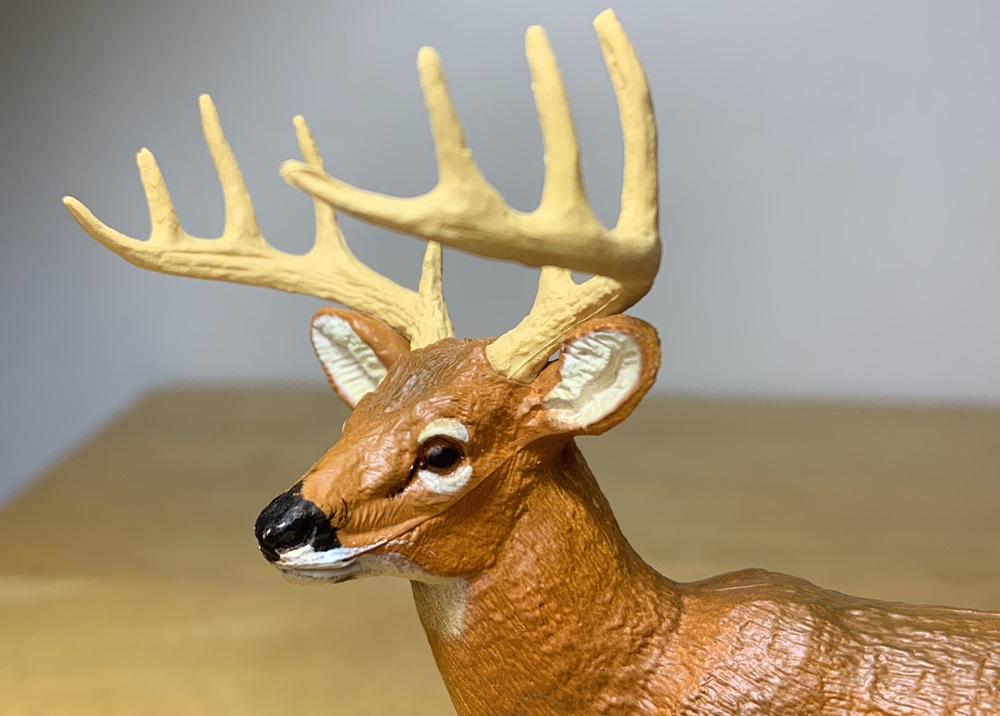
The overall build appears muscular and toned, with a thick neck and muscular shoulders able to support this buck’s impressive rack. The limbs are dainty but well-muscled, with visible tendons stretched along the hindlimbs. The namesake white tail is relaxed but appears ready to flash its white underside upwards in the event of an oncoming threat, which is how white-tailed deer communicate danger to each other. Finer details include an etching of fine hair across the body, longer tufts of hair within the ears, and fine grooves and bumps sculpted onto the bony antlers. The antlers aren’t the only feature to indicate that this figure is a buck, he also has a sculpted scrotum and sheath.
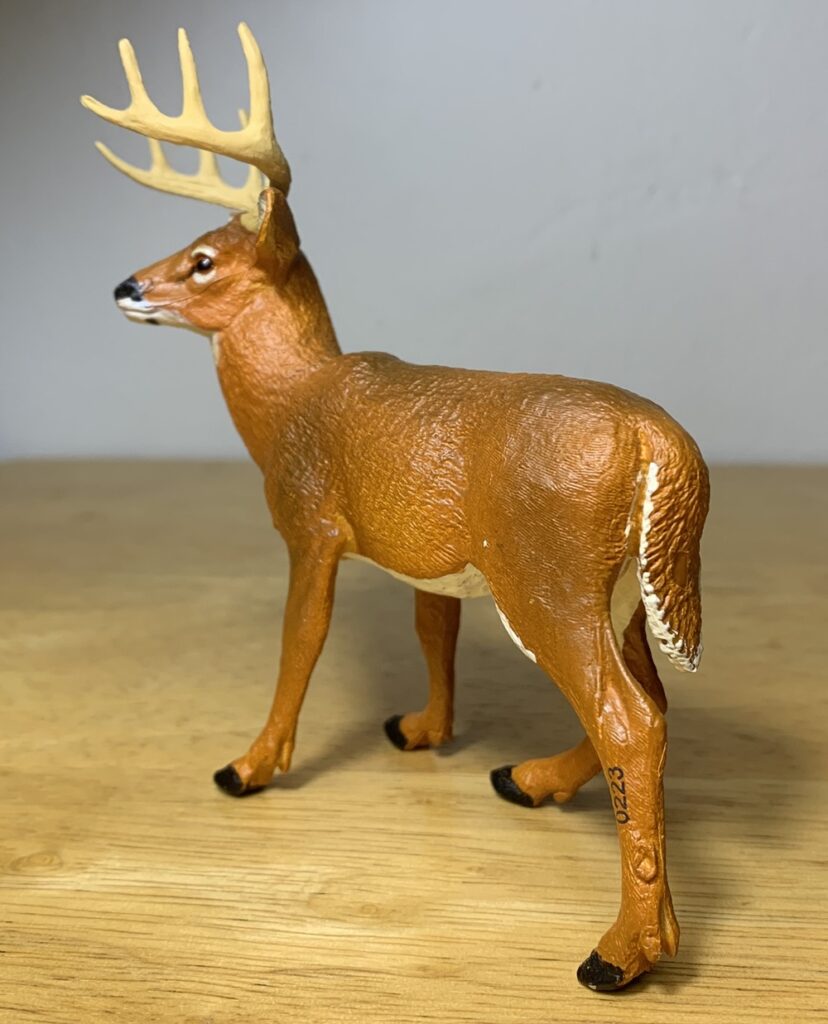
The figure is painted reddish-brown with white on the inside of the ears, lower jaw, throat, belly, inside surface of the thighs, and underside of the tail. The snout is black and a broken black strap wraps around the chin. The eyes are reddish-brown with black, horizonal pupils. The antlers are tan, and the hooves are black. The reddish-brown coat looks more like the summer coat you would expect to see on a white-tail, a better match for a buck in the breeding season would have been a brownish gray, matching the winter coat of the species.
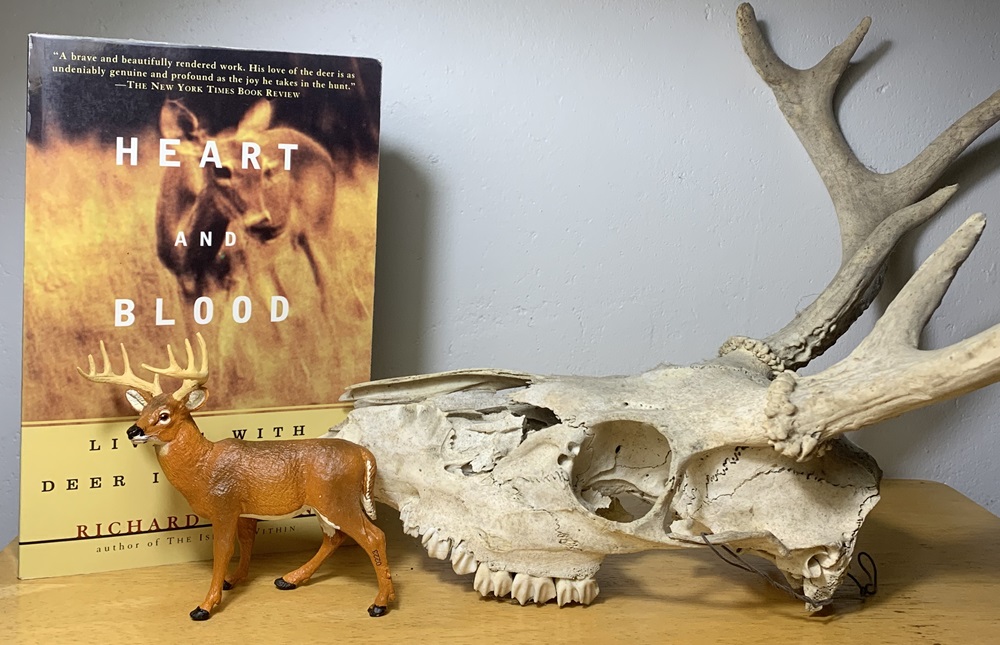
Although this figure is starting to show its age this is still an exceptional figure of North America’s most iconic large mammal. There are a lot of white-tailed deer figures out there, but this one is better than most, with only Papo’s and CollectA’s being of similar quality. CollectA’s appears especially good and there may come a day when I replace this one with that, but for now, I’m content with the Safari white-tailed deer. This figure is still in production and retails for about $7.00.
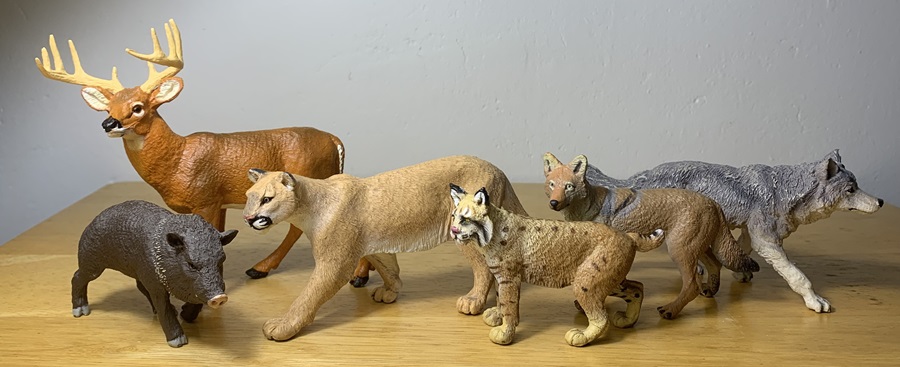
Disclaimer: links to Ebay and Amazon on the AnimalToyBlog are affiliate links, so we make a small commission if you use them. Thanks for supporting us!



